Bait and Switch
In 1968, Buckminster Fuller published ‘Operating Manual for Spaceship Earth‘ — a book detailing humanity sailing through space aboard a planetary vessel requiring careful management of finite resources.
What Fuller envisioned has become real.
The cockpit controls exist, they're operational, and someone is flying this ship. The question is: who determines when alarms sound and course corrections activate?
The relationship between humans and governance has shifted. While we believed we created tools to help make better decisions, we instead created a system where those who control the parameters control everything.
The genius lies not in the automation, but in the invisibility of the programmers. When an SDG indicator trigger an automated responses, it appears objective — a case of ‘following the science’. But someone, somewhere, decided what numbers constitute a ‘crisis’ and what responses should activate when those thresholds are crossed.
The computational inversion masks human control behind opaque, mathematical authority. The ship appears to fly itself, but someone pre-programmed the course corrections.
Bait and Switch
On the surface, the 17 Sustainable Development Goals sound wonderful: ‘End Poverty’, ‘Quality Education’, ‘Climate Action’. Who could oppose such noble aspirations? And that’s precisely the point — the SDGs are designed to be uncontroversial while concealing the actual control mechanism.
The real power lies not in the goals themselves, but in the 231 technical indicators that measure ‘progress’ toward these goals. While the public supports the feel-good objectives such as ‘ending poverty’, they never voted on specific surveillance metrics nor the reference values which determine when automatic interventions activate.
Here's how the control system actually works:
Step 1: Vague, appealing goal
(‘Zero Hunger’)Step 2: Technical indicator conversion
(‘Prevalence of undernourishment in the population’)Step 3: Continuous surveillance data collection
(satellite monitoring, economic data, health records)
Step 4: Reference value comparison
(current data vs. predetermined thresholds)Step 5: Automated response triggers when indicators breach acceptable ranges
For example:
SDG 1 (No Poverty): Sounds humane
→ Indicator 1.1.1: ‘Proportion of population below international poverty line’
→ Reference Value: $2.15/day
→ Surveillance: Financial transaction monitoring
→ Trigger: Automatic wealth redistribution when threshold breachedSDG 13 (Climate Action): Sounds responsible
→ Indicator 13.2.1: ‘Number of countries with climate plans’
→ Reference Value: 1.5°C pathway compliance
→ Surveillance: Carbon monitoring via satellites/sensors
→ Trigger: Automatic behavioral restrictions when emissions exceed targets
The SDGs are the marketing campaign. The indicator surveillance system is the actual governance mechanism.
Thresholds as Law
To understand how this works in practice, consider the surveillance infrastructure behind seemingly innocent goals:
SDG 11 (Sustainable Cities) becomes:
Indicator 11.2.1: ‘Proportion of population with access to public transport’
Surveillance: GPS tracking of movement patterns via smartphones and transit cards
Reference Value: 70% public transport usage in urban areas
Automated Response: When private vehicle usage exceeds thresholds, congestion pricing activates automatically, parking restrictions tighten, and fuel costs adjust via programmable digital currency
SDG 16 (Peace and Justice) becomes:
Indicator 16.10.2: ‘Number of countries that adopt constitutional, statutory guarantees for public access to information’
Surveillance: Social media monitoring, information flow analysis, ‘misinformation’ detection algorithms
Reference Value: 95% ‘information quality’ score based on alignment with official sources
Automated Response: When ‘misinformation’ levels breach thresholds, algorithmic content filtering intensifies and digital identity systems restrict information access
Each SDG contains multiple indicators. Each indicator has reference values. Each reference value triggers automated responses when breached. The result: comprehensive behavioral control disguised as progress measurement.
And those reference values… they’re not necessarily static.
The Pilots
When an SDG indicator crosses its threshold, a predictable sequence activates:
Crisis Detection: Automated monitoring systems flag the deviation
Expert Interpretation: Pre-positioned NGOs declare moral emergency
Solution Design: Trisectoral networks implement pre-planned responses
Automated Enforcement: Smart infrastructure adjusts human behavior
Feedback Loop: Results feed back to refine future interventions
The entire process appears objective, but every step was programmed by specific actors who remain invisible behind the technical complexity.
The Black Box Cockpit
The mechanism steering Spaceship Earth operates through a concealed control hierarchy:
Flight Plan: The 2030 Agenda sets the destination (Omega Point convergence)
Navigation Computer: Digital Twins simulate outcomes using programmed parameters
Autopilot Settings: Reference values determine when ‘course corrections’ activate
Flight Controls: Algorithmic systems implement adjustments without revealing the original programmers
Instrumentation Panel: SDG indicators provide continuous feedback to the control center
Emergency Protocols: Crisis thresholds trigger predetermined responses regardless of local conditions
Mathematics of Control
The SDG reference values function as invisible legislation — laws that never went through democratic processes but automatically trigger global responses. When indicators breach thresholds, it's not just data; it becomes algorithmic law enforcement disguised as objective science.
The mathematical formulas appear neutral, but they encode specific political outcomes:
Who decides what constitutes ‘sustainable’ development?
Who determines acceptable inequality ranges?
Who sets the biodiversity thresholds that can override local land use?
Who establishes the social cohesion metrics that trigger ‘intervention’?
The answer: A small network of institutions whose composition and decision-making processes remain largely opaque to the global population being governed by their reference values.
The Programmers of Spaceship Earth
While the system appears to run itself, careful analysis reveals the actual control structure:
Level 1: Technical organisations (IIASA, OECD, World Bank) develop indicator methodologies
Level 2: UN agencies (UNESCO, WHO, UNEP) set reference standards and thresholds
Level 3: Central bank networks (BIS, NGFS) embed indicators into financial enforcement mechanisms
Level 4: Corporate implementation (WEF partners) deploy automated response systems
Level 5: Real-time adjustment based on continuous monitoring by the same networks
The pilots of Spaceship Earth aren't elected officials or democratic assemblies. They're technical specialists in international organisations whose reference value decisions automatically trigger behavioral modifications for billions of people.
Moral Ought
In 1893, philosopher Paul Carus envisioned religion as ‘the authority of the moral ought’ — not supernatural intervention but invisible architecture enforcing ethical conduct through scientific authority. What Carus described abstractly has achieved technological perfection.
The SDG framework represents Carus's vision operational at planetary scale, but with a crucial update: the authority remains human, just hidden. The reference values aren't set by gods or algorithms — they're set by specific people in specific institutions who have positioned themselves as the invisible pilots of planetary governance.
Engineering Convergence
Pierre Teilhard de Chardin's Omega Point — the convergence of human consciousness into universal intelligence — serves as the programmed destination of Spaceship Earth's autopilot. The SDG reference values are calibrated to steer toward this endpoint through systematic behavioral modification.
As human activity gets increasingly constrained within algorithmic parameters, individual agency dissolves into collective optimisation. The reference values ensure that every deviation from the programmed path triggers automatic correction, gradually conditioning humanity toward convergence.
But this isn't inevitable evolution — it's deliberate programming by those who control the reference standards.
Hidden Hand
The true sophistication of the system lies in its accountability vacuum. When automated responses activate, everyone claims they're just ‘following the best available scientific evidence’ — except for the ‘experts’, who will create the demand for even higher resolution surveillance data:
Politicians: ‘We must follow the science’
Corporations: ‘We're meeting global standards’
NGOs: ‘We're responding to data-driven crisis’
Citizens: ‘The experts know best’
The Experts: ‘The surveillance data was low resolution, we must do better‘
The people who set the reference values that triggered everything remain invisible behind layers of technical complexity and institutional obscurity.
Moral Inversion
The system achieves its most sophisticated inversion through SDG reference values which aren't just technical thresholds but moral judgments. When surveillance data shows indicators breaching their reference values, it doesn't just signal a ‘problem’ — it creates an automatic moral crisis demanding immediate intervention.
Consider the elegant psychological manipulation: If carbon emissions exceed the 1.5°C reference pathway, you're not just causing environmental damage — you're committing moral transgression against future generations. If inequality indicators breach their thresholds, your economic success isn't just personal achievement — it's systemic injustice requiring correction. If biodiversity metrics fall below reference values, land use becomes a moral emergency overriding local community preferences.
This transforms Hermann Cohen's philosophical inversion into operational reality: the reference values (law) generate the moral obligations (ethics) rather than ethics constraining the reference values. Whoever sets these numerical thresholds effectively programs the moral responses of entire populations. When indicators breach their ranges, algorithmic systems don't just trigger technical adjustments — they activate moral authority that justifies any intervention necessary to restore the numbers to acceptable levels.
Economic Implementation
This moralisation of mathematics enables what Mark Carney calls the ‘moral economy’ — a financial system that doesn't just allocate capital based on returns, but enforces virtue through ESG scores, carbon credits, and social impact metrics. Your access to banking, investment, insurance, and even employment increasingly depends on your compliance with SDG indicator targets.
The genius is that financial control becomes a moral imperative. When your ESG score drops because local biodiversity indicators breach reference values, restricting your credit isn't oppression — it's planetary stewardship. When your carbon budget gets automatically limited because emissions indicators exceed thresholds, it's not authoritarianism — it's climate justice. When your social credit adjusts because community cohesion metrics deviate from reference ranges, it's not surveillance — it's building back better.
The moral economy completes the control system by making resistance feel selfish and compliance feel righteous. The reference values don't just trigger automatic responses — they program automatic moral justification for whatever interventions the system deems necessary. You're not being controlled; you're being saved from your own moral inadequacy by benevolent algorithms that understand virtue better than you do.
Final Recognition
We're witnessing the completion of the most sophisticated control system in human history. Not because it's automated, but because it conceals human control behind algorithmic authority.
The SDG reference values serve as the hidden control panel of global governance. Whoever sets these parameters effectively programs the automated responses that shape billions of lives. They are the invisible pilots of Spaceship Earth, steering toward their chosen destination while maintaining the fiction of objective, scientific governance.
The ship isn't flying itself. Someone is at the controls — they've just positioned themselves behind the black box where their decisions appear as mathematical inevitabilities rather than political choices. The black box has hidden those behind the curtain, yet their decisions — draped in dubious claims of ‘scientific evidence’ — are sent through opaque models and treated as gospel truth. Truth has become centralised, while responsibility was diffused.
The computational inversion is complete: Human control has been maximised through its apparent elimination. The most powerful governors in human history exercise their authority through the setting of reference values that trigger automatic global responses.
Welcome aboard Spaceship Earth. The course has been set by pilots you'll never see, toward a destination you never chose, using controls disguised as cosmic law.
Those who set the reference values controls the world. And the rendition of ‘justice’ related to those values will soon be administered by AI, working to cut humanity from the loop entirely.


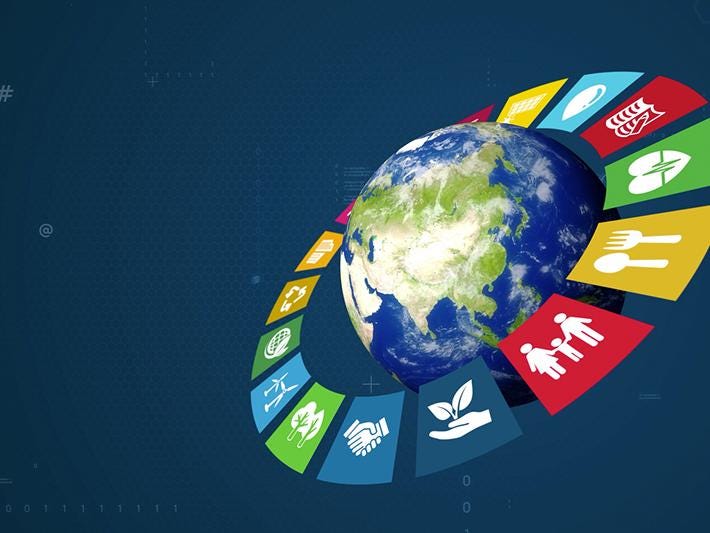


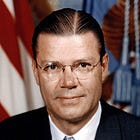


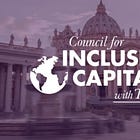
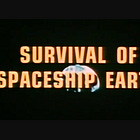





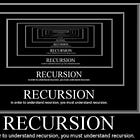

Outstanding work. So very clearly lays out the HOW and I like how you reiterate that humans are in charge, none of this ‘AI is sentient’ BS. Thankyou.
You are a true hero, we need to feed this information to all the fence sitters in an easy to understand way to get them interested enough to start their own deep dives. Most importantly we must say no to the Digital ID and any attempt to get the CBDC implemented. Total surveillance is the name of the game of the one world order crowd administered via an AI Technocracy and tell us how wonderful it would be to fool us. The western world is being invaded and this is part of the takeover plan. So many are waking up so they are all in right now via geo engineering depopulation agendas and brainwashing school children to believe CCBS. JUST SAY NO